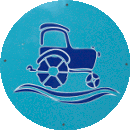top of page

Our curriculum
What is a curriculum?
An early-year curriculum is designed to provide a structured learning framework tailored to the developmental needs of children from birth to five years. It goes beyond mere activities, encompassing a holistic approach that promotes social, emotional, physical, and intellectual development. This curriculum works in tandem with the EYFS, a mandatory framework set by the UK government, ensuring all nurseries provide a standardised level of education that supports early learning goals.
What are early learning goals?
The EYFS outlines specific early learning goals that set expectations for what children should know and be able to do by the end of the reception year. These goals cover seven critical areas of learning and development, including personal, social, and emotional development; communication and language; physical development; literacy; mathematics; understanding the world; and expressive arts and design. Aligning our curriculum with these goals ensures a cohesive educational journey that supports holistic development.
To see how we support this please see the curriculum we have created and imbed within our practice below.
bottom of page

